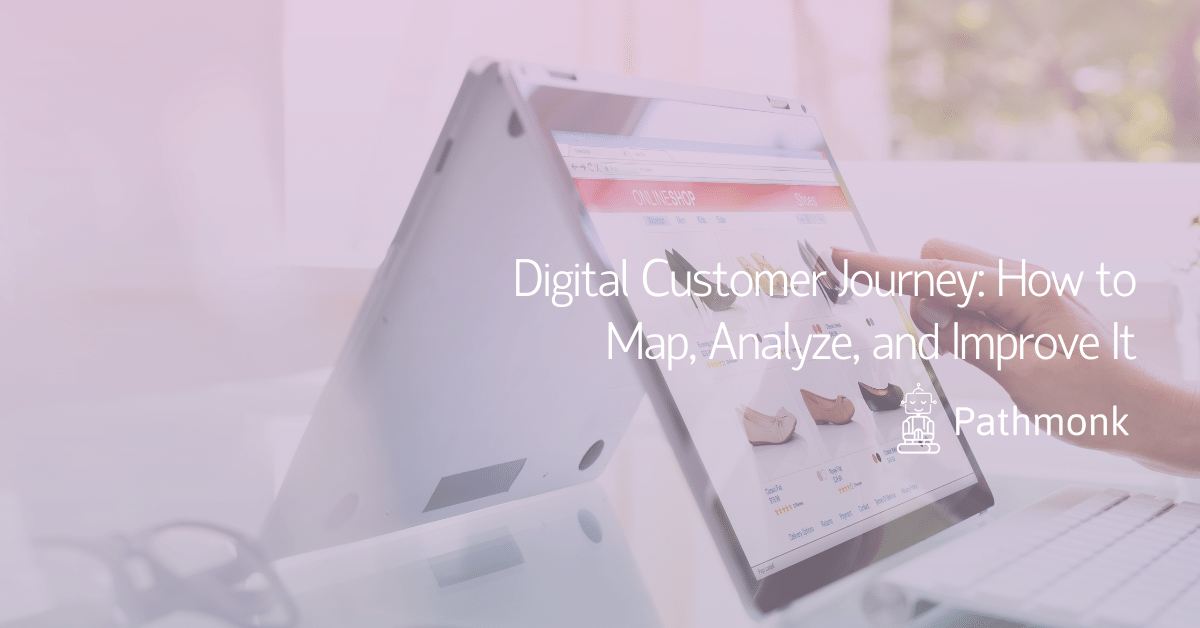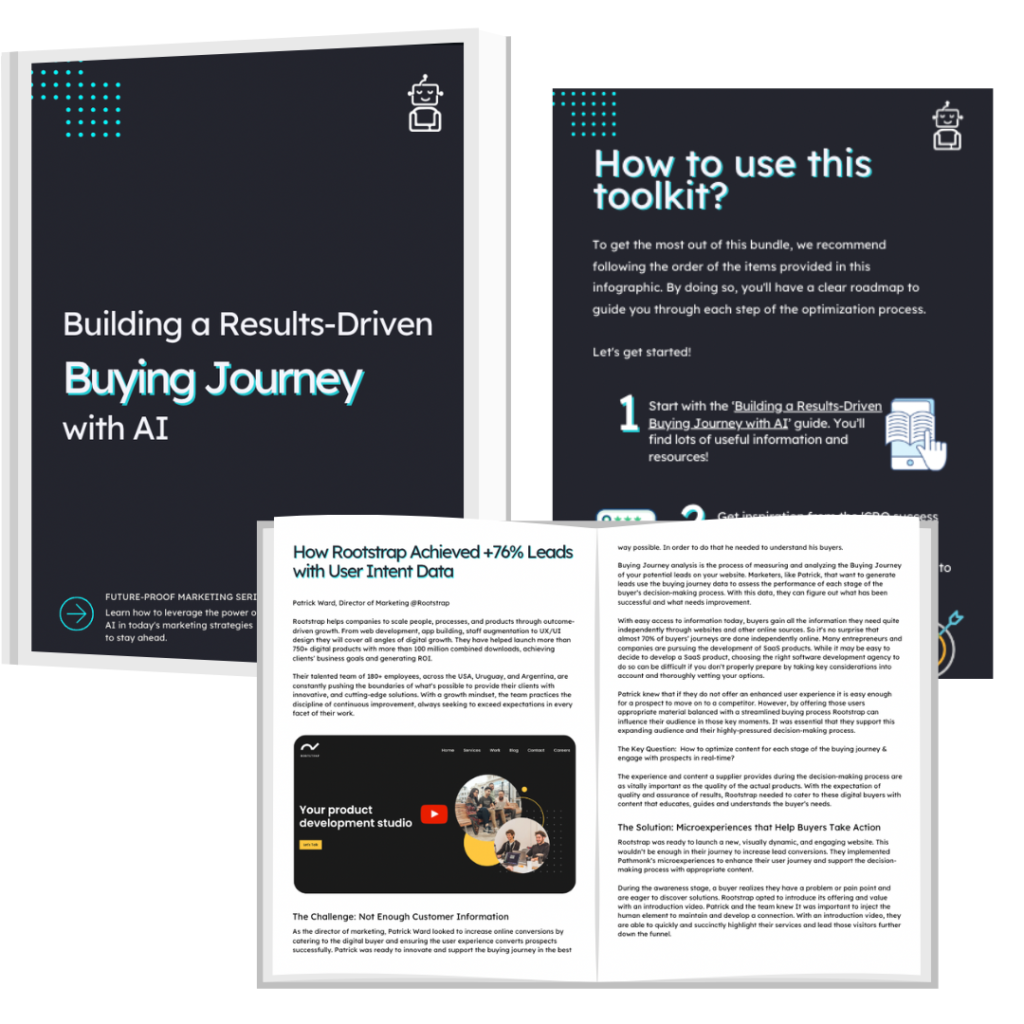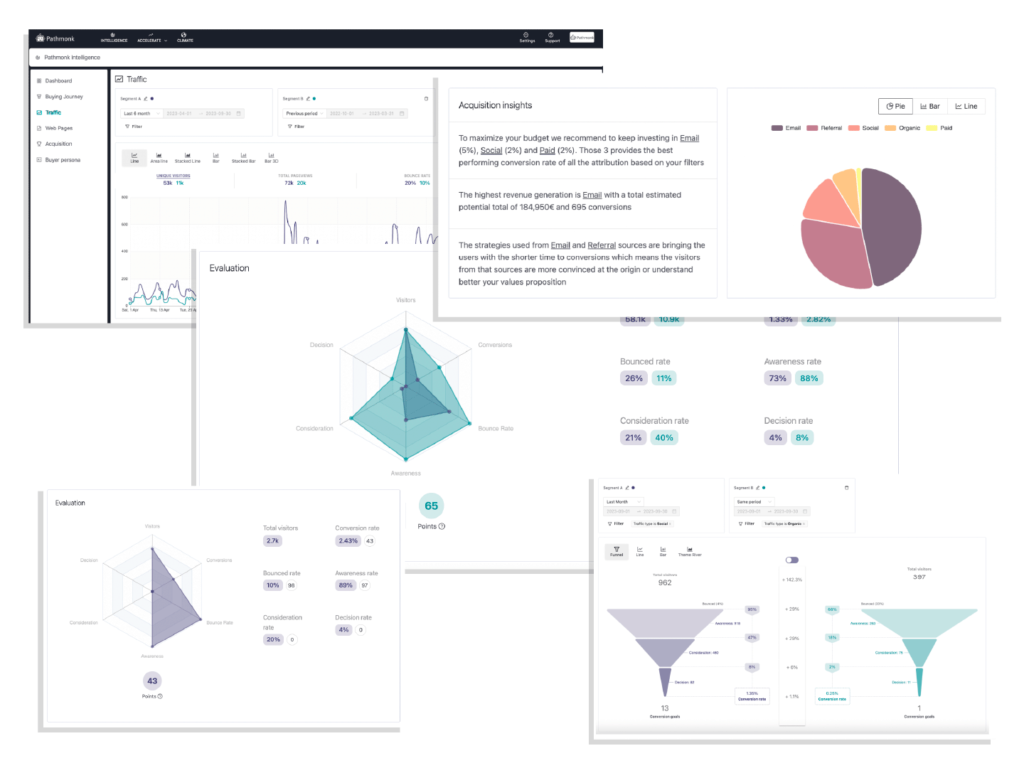Digital Customer Journey: How to Map, Analyze, and Improve It


Every prospect has a digital customer journey they take through all the products and services they buy. Marketing efforts place ads around in physical and digital locations that spread brand or product awareness to the public. Through these efforts and often word of mouth, visitors come to your website to learn more. These points often mark the beginning of a customer’s digital journey. Looking closely at the journey from first interaction with a brand to eventually becoming a customer can provide valuable insights to a company’s processes. If you are looking for ways to improve your company, it all hinges on creating a map, analyzing it, and improving the overall process.
Free AI-Powered Buying Journey Toolkit
Learn how to optimize your buying journey and speed up your revenue with top strategies and invaluable resources.

How to Map the Digital Customer Journey
Journey maps are going to look a little different for each customer and require a lot of research. There are many tools available for helping build a digital map because of the analytics and information gathered in each step.
To begin a digital map, it all starts with how a customer finds your brand or learns about your product/service. Since digital footprints are left for website visitors, this will usually look like a link that was clicked. Whether this is a link from a social media page or an online ad, you will see where the visitor clicked to your website.
From the time someone clicks a link, analytics can show what webpage the visitor landed on your website. Cookies and software can help provide a little more to the website visits. Seeing where visitors spend the most time on your site or what pages are visited the most frequently can help you know what pages are deemed most valuable. Other tools help you know where they linger on pages, showing the most interest.
Knowing not only the journey, but also the duration of each stage, is helpful information to add. For instance, if you are selling clothing items and the same visitor clicks on your ads on a social media page 3 times a week without buying something, you know that the ads are compelling and show the right information for a click. Once on the website, you have other obstacles to getting them to buy, like page performance, prices, or offering similar styles of clothing they are interested in.
Along with the timings, it is helpful to analyze certain marketing efforts. If your goal as a company was to build an email list, you may have added a pop-up box with an offer for sending deals to their inbox. Did visitors input their email address? Did a deal you send there eventually lead to them buying? Include all marketing efforts into your map.
Other helpful information is what amount of money was spent? This can include how many products or how many months of service were purchased the first time? From there, include information on repeat customers. How many customers came back and made more purchases? On repeat buys, how much money did they spend?
Part of building a customer journey map is knowing customer behaviors so you can analyze them for journey insights. Those insights can help you find specific strengths and pain points for your customers so you can make adjustments as needed.

Analyzing the Journey for Insights
Looking closely at the digital journey each customer takes to find your products or services can make your company better all-around. It will improve your marketing strategies, approaches to customers, and how you move potential customers through your sales funnel. When the process is better, you have more potential to grow your business.
Specific things that you are looking for when analyzing your insights will vary, depending on the goals of your company. If you are wondering how customers are finding your site, products, or services, that information will be the most valuable. The information can show where your marketing dollars are best spent and what campaigns are successful.
Google Analytics is a great tool for providing insights on successful campaigns. Social media platforms can also provide analytics on the reach of posts, clicks on your ads, and even how many page views companies have had.
Some helpful ways to analyze a digital journey include tools that help with:
- Lead qualification: analyze which leads coming to your company are worth pursuing. Not all leads are created equal and not all lead to sale conversion. Taking a close look at which leads are the most profitable can help your company increase its ROI with marketing efforts. Use lead qualification tools if needed.
- Website analysis: finding improvements for your website are often the most valuable for improving a customer’s digital journey. While it is important to find which pages are performing best, it is also good to know which ones are performing the worst. This information can help improve clarity, website value, and its SEO results. Knowing visitor behavior can also give you a better look at how your website is performing.
- Conversion optimization: turning website visitors into paying customers is the goal of every company. Looking at specific points that encourage the conversion process can help find what is working and where you could improve strategy. If you find successful strategies, look for ways to apply those in other areas too, like social media strategy.
Other valuable supporting tools will focus on bringing traffic to your website. While they may not help analyze the information, they can provide more digital customer journeys, building your pool of data to analyze. More data is good because it gives you an opportunity to gain greater insights.
Having the right tools in place to gather data is critical. Many companies find that they like using additional software to help organize and analyze all the information. Computer programs can often find patterns in shorter amounts of time and be adapted to help with different goals. A trained eye is needed to interpret the findings to look for answers to the following questions:
- Where can we improve our process?
- Are there specific marketing strategies being missed?
- What goals should the company make?
Another great way to find areas of improvement are to find the most common places that journeys stall. If there are common places this happens, it is a problem with potential to be fixed. Sometimes there are easy fixes and other times it takes a lot of work and creativity.
Some insights might show that your sales team wasn’t responsive enough or was too aggressive. Perhaps the point where your pricing is introduced is the biggest stumbling block for customers. Building up expectations for a product can be another common problem if you cannot live up to claims being made. Whatever it is, find the pain points in your buying process.
Once you have a lot of the analysis done, move on to how you can improve the journey for current and future customers.
Improve the Journey
The most important parts of the journey are going to be points where expectations were not met and key marketing points. The best way to get this information is not measured with software tools. Instead, find weak points by talking to those who know best. Two great ways are by asking customers and employees.

Talking to Customers
Customer surveys are a valuable way to find pain points in your process. Customers usually appreciate being asked how you can improve your buying process because it shows you value their opinion. If your product or service is a model that requires a subscription or ongoing deal, it helps benefit the customer to point at ways you can improve. If it does not, giving feedback helps improve the experience for others in the future.
One thing that companies struggle with is getting honest feedback. For some, giving a way for customers to answer anonymously allows them to feel freer to be honest without any type of repercussions. Others are more willing to share if they can fill out a form with a rating scale from an email. However, you do it, getting the feedback is crucial.
Employee Feedback
Companies can gain critical advice for finding pain points by talking to the employees. Sales teams, customer service agents, and other employees who are working with these problems every day will have a greater insight into the most common problems. Talk to them and find how they work around the problems or what prospective clients have said about it all.
Once you have compiled all the information from multiple journeys, it is time to get to work. Figure out where the pain starts for customers and look at your company procedures. Finding the most efficient ways to deal with a problem or avoid it altogether can help make your company more profitable.
Always Work to Improve
No matter what tools you employ, the process of improving the journey for each customer should be a focus for every company. There are no perfect companies and those who continuously look to improve themselves see the most sustainable growth for longer periods of time.
Intuitive Cookieless Analytics for Your Web
Understand your customer journey, find drop-offs, and receive actionable insights with AI.






